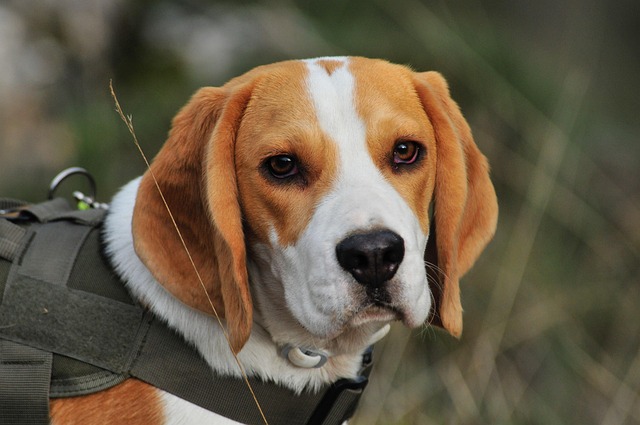
How can I tell if my dog's heatstroke is serious
Let’s be real: It’s a sticky August morning in Los Angeles, and you took your 2-year-old Golden Retriever, Max, for a walk a little later than usual
You’ve just finished a sunny hike with your 45-pound Golden Retriever, Bailey, through Arizona’s Red Rock Canyon. As he collapses panting in your SUV, you pour exactly 2 cups of water into his travel bowl – but those beads of sweat forming on your own brow make you wonder: Is this really enough? Here’s the uncomfortable truth: 2 cups is rarely sufficient as a fixed rule. Dogs need approximately 1 ounce of water per pound of body weight daily – meaning Bailey requires at least 5.5 cups on a cool day without exercise. After desert hiking in 90°F heat, he might need double that amount. That "2 cups" measurement ignores critical factors like climate, activity level, diet, and health status.
A dog’s biology explains why flexibility matters. Unlike humans who sweat efficiently, dogs cool themselves primarily through panting – a process that evaporates moisture 10 times faster than human perspiration. Kibble-fed dogs need significantly more water than those on raw diets (which contain 70-80% moisture). Senior dogs, nursing mothers, or pets on medications like steroids have dramatically increased needs. Early dehydration signs creep up subtly: sticky pale gums, skin that tents when gently pinched at the shoulder, and reduced energy. By the time Bailey shows sunken eyes or rapid heartbeat, he’s already in crisis mode risking kidney damage.
Instead of measuring cups, become a hydration detective. Always provide multiple clean water sources – ceramic bowls prevent bacterial buildup better than plastic. After exertion, offer small frequent sips to prevent dangerous bloat. Notice patterns: Sudden increased drinking could signal diabetes; decreased intake might indicate illness. For active days, add water to kibble or freeze bone broth into popsicles. If Bailey shows severe symptoms like collapse or rapid pulse, wet his gums with water and immediately drive to an emergency vet – subcutaneous fluids may save his life. Waiting to "see if he recovers" risks permanent organ damage.

Responsible U.S. ownership treats water access as a legal obligation. Laws in states like California and Florida explicitly require continuous clean water access – denying it constitutes animal neglect. During neighborhood walks, always carry portable water and a collapsible bowl. Remember that failing to scoop Bailey’s waste violates ordinances in cities like Miami ($500 fines) and spreads parasites in communal grass areas. If Bailey avoids drinking during car rides, never force his muzzle into water. Positive reinforcement – praising calmly when he sips or offering post-drink treats – aligns with modern force-free ethics and builds trust.
Apartment living demands clever adaptations. Dry winter air from heating systems increases hydration needs – consider adding a humidifier near sleeping areas. Place water bowls away from loud appliances that might startle drinkers. For high-rise dogs needing extra potty breaks due to increased water intake, coordinate elevator schedules with neighbors or use balcony turf pads. Opt for weighted non-spill bowls to prevent "midnight tsunami" accidents on hardwood floors.
Community etiquette shines during group activities. At dog-friendly spots like Austin’s Zilker Park, share water if another owner’s dog shows dehydration signs. Keep Bailey leashed near crowded water stations to prevent resource guarding. Politely educate neighbors who leave dogs without water on balconies – "Phoenix heat turns tile into frying pans by 9 AM!"
Watching Bailey gulp those 2 cups after hiking? He likely needed more. Tailor hydration to his life – not arbitrary measurements. Pair this awareness with consistent poop cleanup, stress-free hydration training, and climate adjustments to keep your adventurer thriving. Remember: Water is the invisible leash connecting you to your dog’s wellbeing.

Let’s be real: It’s a sticky August morning in Los Angeles, and you took your 2-year-old Golden Retriever, Max, for a walk a little later than usual

You're enjoying a summer afternoon at the park when you notice your dog has stopped panting and appears disoriented - their gums are bright red

Let’s paint the picture: You’re in your Denver apartment, watching your 4-year-old Boston Terrier, Ruby, plop down mid-play session with her favorite toy

Many dog owners notice their pets nails seem shorter after regular walks,but how much does this daily activity actually help?The answer depends on where you walk—concrete sidewalks or asphalt streets gently file nails as a dog's paws hit the ground

Most dog owners notice their pup scooting across the carpet at some point, but few connect it to impacted anal glands. These small sacs near a dog’s rectum secrete a scent for marking territory

Most vets agree that regular dog teeth cleaning is key to avoiding painful dental issues later. For healthy adult dogs, a professional cleaning at the vet’s office every 12 to 18 months usually works well.